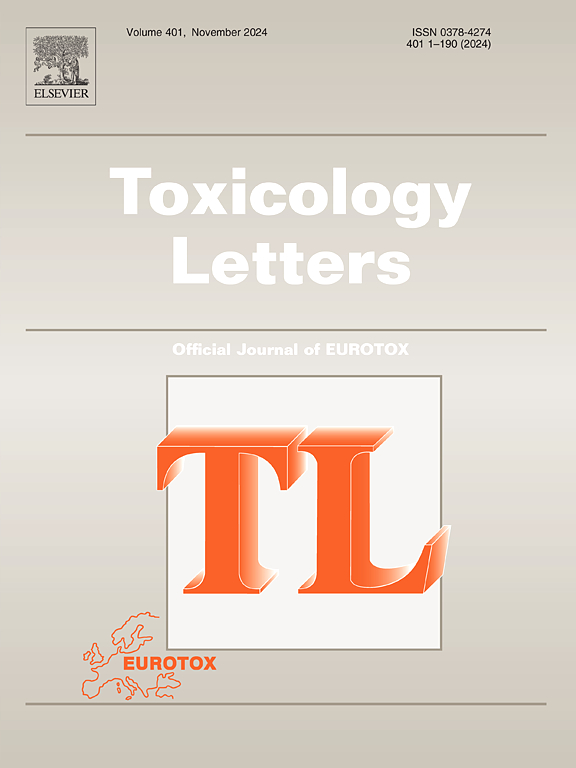探索母鼠和子鼠钆沉积:妊娠期和哺乳期暴露的影响。
IF 2.9
3区 医学
Q2 TOXICOLOGY
引用次数: 0
摘要
为了研究钆基造影剂(gadbca)在妊娠和哺乳期多器官/组织中的沉积作用,将270只ICR小鼠分为三组(未妊娠组、妊娠组和哺乳期组);n=90/组),并在整个妊娠或哺乳期静脉滴注加多二胺、加多二胺或生理盐水(2.5mmol Gd/kg,每2天1次,共10次)。注射完成后、1个月后和3个月后分别对母鼠和幼鼠进行钆浓度检测、组织学分析和透射电镜观察。我们的研究结果表明:(1)妊娠期暴露于gbca后,钆在胎儿器官中的沉积与gadodiamide相比更为显著,肾脏中的沉积最大,大脑中的沉积最少,有趣的是,出生一个月后胎儿体内未发现可检测到的钆沉积;(2)哺乳期暴露于gbca后,未断奶幼犬的器官/组织中未发现可检测到的钆沉积。(3)在所有母鼠和未怀孕小鼠的所有组织中,钆沉积在第一个月的下降速度更快,并且发现怀孕和哺乳期小鼠肾脏中的钆沉积比未怀孕小鼠低。总的来说,怀孕期间暴露于gbca会导致胎儿钆沉积,但没有发现明显的器官毒性,哺乳期暴露于gbca后继续母乳喂养可能不会对幼崽造成钆沉积的风险。本文章由计算机程序翻译,如有差异,请以英文原文为准。
Exploring gadolinium deposition in maternal and offspring mice: Impacts of gestational and lactational exposure
To investigate the gadolinium deposition induced by repeated administration of gadolinium-based contrast agents (GBCAs) in multi-organ/tissue of mother and pup mice during pregnancy and lactation, two hundred and seventy ICR mice were divided into three groups (non-pregnant, pregnant, and lactating; n = 90/group) and received gadodiamide, gadoterate meglumine, or saline intravenously (2.5 mmol Gd/kg once every two days for a total of 10 doses) throughout the entire gestation or lactation period. Gadolinium concentration detection, histological analyses, and transmission electron microscopy were performed on mother and pup mice at the completion of the injection, one month later, and three months later. Our results showed that (i)exposure to GBCAs during pregnancy resulted in gadolinium deposition in fetal organs more significantly with gadodiamide, with the greatest deposition observed in the kidneys and the least in the brain, interestingly, the fetal body was found with no detectable gadolinium deposits one month after birth, that (ii) exposure to GBCAs during lactation did not result in detectable gadolinium deposition in the organs/tissues of the unweaned pups, and that (iii)gadolinium deposition decreased more rapidly in the first month in all tissues examined from all maternal and non-pregnant mice, and gadolinium deposition was found to be lower in the kidneys of both pregnant and lactating mice than in non-pregnant mice. Collectively, exposure to GBCAs during pregnancy resulted in gadolinium deposition in their fetuses with no significant organ toxicity found, and breastfeeding continued after exposure to GBCAs during lactation may not pose a risk of gadolinium deposition to the pups.
求助全文
通过发布文献求助,成功后即可免费获取论文全文。
去求助
来源期刊

Toxicology letters
医学-毒理学
CiteScore
7.10
自引率
2.90%
发文量
897
审稿时长
33 days
期刊介绍:
An international journal for the rapid publication of novel reports on a range of aspects of toxicology, especially mechanisms of toxicity.
 求助内容:
求助内容: 应助结果提醒方式:
应助结果提醒方式:


